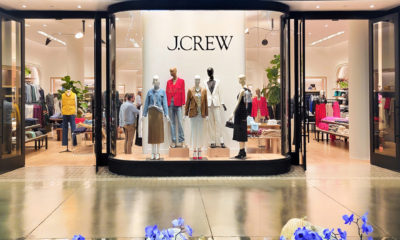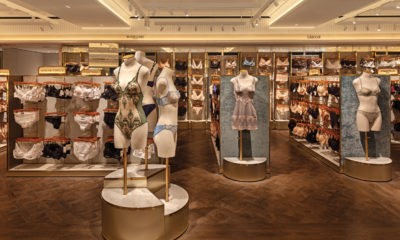Canada’s only Samsung Experience store, in Toronto, is an achievement on many levels – the location, the use of the location, the interior architecture, the colors and presentations, the placement of the ceiling lights, the angles of the ceiling lights, the choices of shades and reflectors, the energy efficiency of the whole endeavor. You can read about it in this month’s issue of VMSD.
But here’s a case where lighting indeed dominates the design intent. And how, in this yin and yang of modern technology, the designer discovered an amazing fact that colored – yes, that pun is intended – his entire approach to the store.
Lighting in one of today’s consumer electronics stores has particular challenges. In addition to achieving the cool, high-tech ambience Samsung was after, and focusing task lighting on the merchandise, the myriad digital screens on the products themselves have their own lighting, so they must be free of reflections and bright spots from the lighting around them. And where do you put the downlights, avoiding useless pools of light on the floor while they bathe the products in useful illumination without shining right down on them?
“We didn’t want to throw light on the screens,” explains George Foussias, Design Director at the Toronto design firm Quadrangle (and a speaker at this year’s IRDC), which created the Samsung store, “just to light the tables and all the accessories on them, without a light so strong that it reflects on the screens or overpowers the screens.”
Foussias thought he’d considered everything. Then he encountered one of the traps created by the technology that designers never had to worry about before.
It happened a couple of years ago, when Foussias was attending EuroShop in Dusseldorf, Germany.
“I saw some lamps that attracted me, and so I took out my Samsung phone to take their images,” Foussias told me. “When I looked through the lens, I could see waves of light flashing across my vision. What I realized I was looking at were dark and white light frequencies.”
He did some research and discovered that different cameras from different phones have different frequencies by which they capture an image.
“We realized that whatever LED sources we use in the store, their frequencies have to match those of the Samsung phones,” said Foussias. “If customers look through the lens of one of the phones and see that everything is vibrating, it would be disastrous. They’d blame it on the poor quality of the phone without questioning all the frequency changes that cause the unevenness. You certainly can’t tell with a naked eye.
“If I hadn’t looked through my phone in Dusseldorf,” he said, “I’d never have known, either.”
When I first entered this industry, in the 1990s, lighting was emerging as one of the major tools in a store designer’s kit. Suddenly, there was a huge variety of issues to consider – color rendering, warm light versus cool light, the best light sources for the various lighting tasks, the best placements for the various light sources, the cost of energy, the life of the lamps.
I was involved with GlobalShop at the time, and we had expert panels talk to the audience of store planners and visual merchandisers about the technologies of lighting. It could get quite deep into the technical weeds, and you could see the attendees’ eyes fog up. We learned never to schedule one of these lighting seminars right before or right after lunch.
What we didn’t learn, for a couple of years, was that store designers didn’t necessarily have to know their lumens from their ohms. What they did have to know was how the various types of lamps – incandescent, fluorescent, compact fluorescent, halogen, HID, metal halide – affected their store floors and their budgets. And then, along came LEDs, to muddy the waters even more, before they cleared everything up.
But digital technology has changed the game yet again. And count on it continuing to change. Isn’t that what a Samsung or Apple experience store is all about, anyway?
As a journalist, writer, editor and commentator, Steve Kaufman has been watching the store design industry for 20-plus years. He has seen the business cycle through retailtainment, minimalism, category killers, big boxes, pop-ups, custom stores, global roll-outs, international sourcing, interactive kiosks, the emergence of China, the various definitions of “branding” and Amazon.com. He has reported on the rise of brand concept shops, the demise of brand concept shops and the resurgence of brand concept shops. He has been an eyewitness to the reality that nothing stays the same, except the retailer-shopper relationship.


 Photo Gallery2 days ago
Photo Gallery2 days ago
 Headlines1 week ago
Headlines1 week ago
 Headlines2 weeks ago
Headlines2 weeks ago
 Sector Spotlight2 weeks ago
Sector Spotlight2 weeks ago
 Headlines1 week ago
Headlines1 week ago
 Headlines3 days ago
Headlines3 days ago
 Headlines2 weeks ago
Headlines2 weeks ago
 Designer Dozen1 week ago
Designer Dozen1 week ago













